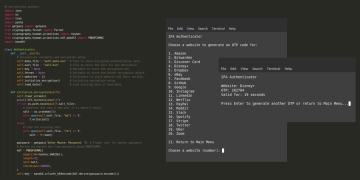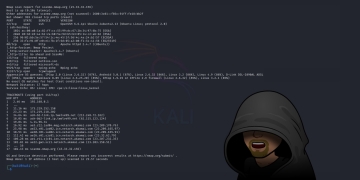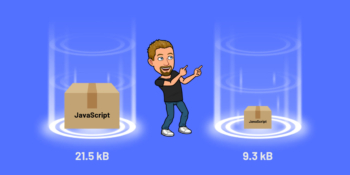In the quaint town of Punxsutawney, Pennsylvania, a unique tradition unfolds each year on February 2nd, known as Groundhog Day. A groundhog, known as Punxsutawney Phil, emerges from its burrow to predict the arrival of spring based on whether it sees its shadow. While this charming ritual has captivated audiences for over a century, modern technology offers us a different method to forecast seasonal change. This article explores a PHP script that interacts with the National Weather Service (NWS) API to predict an early spring based on temperature forecasts. The script symbolizes how traditional events can inspire innovative technological solutions, bridging folklore with the precision of modern science.
The PHP Script
The core of this application is a PHP script that interfaces with the National Weather Service API to retrieve weather forecasts for a specific location and uses this data to predict the coming of spring. Below is the script, followed by a detailed explanation of its components.
<?php
// Base URL for the National Weather Service API
$baseUrl = 'https://api.weather.gov';
// Endpoint for the coordinates of Punxsutawney, PA
$pointUrl = $baseUrl . 'https://d398j6qs7ssf4p.cloudfront.net/points/40.9436,-78.9709';
// Function to make a GET request to the NWS API
function fetchFromNwsApi( $url ) {
$ch = curl_init();
curl_setopt( $ch, CURLOPT_RETURNTRANSFER, true );
curl_setopt( $ch, CURLOPT_URL, $url );
// Set the User-Agent header as required by the NWS API guidelines
curl_setopt( $ch, CURLOPT_HTTPHEADER, array( 'User-Agent: PHP script' ) );
$result = curl_exec( $ch );
curl_close( $ch );
return json_decode( $result, true );
}
// Fetch the gridpoint URL
$pointData = fetchFromNwsApi( $pointUrl );
if ( isset( $pointData['properties']['forecast'] ) ) {
$forecastUrl = $pointData['properties']['forecast'];
// Fetch the forecast data
$forecastData = fetchFromNwsApi( $forecastUrl );
if ( isset( $forecastData['properties']['periods'] ) ) {
$totalTemp = 0;
$count = 0;
foreach ( $forecastData['properties']['periods'] as $period ) {
if ( $count < 7 ) { // Limit to a week's forecast
$totalTemp += $period['temperature'];
$count++;
}
}
$averageTemp = $totalTemp / $count;
// Prediction based on average temperature
if ( $averageTemp > 0 ) { // Assuming 0°F as the threshold for an early Spring
echo "Prediction: Spring will come early this year!";
} else {
echo "Prediction: Spring will not come early this year.";
}
} else {
echo "Failed to fetch forecast data.";
}
} else {
echo "Failed to fetch gridpoint data.";
}
?>
Script Breakdown
Initial Setup
The script begins by defining the base URL for the NWS API and specifying the geographic coordinates for Punxsutawney, PA. These coordinates are used to construct the endpoint for retrieving weather data specific to this location.
Fetching Data from NWS API
A function fetchFromNwsApi is defined to streamline the process of making GET requests to the NWS API. This function uses PHP's cURL library to fetch data from a given URL, setting necessary options such as return transfer and custom headers to comply with NWS API guidelines. The fetched data is then decoded from JSON format into a PHP associative array.
Processing Forecast Data
The script fetches the gridpoint data to obtain the forecast URL specific to Punxsutawney. It then retrieves the forecast data, focusing on the temperature forecasts for the upcoming week. By iterating over the forecast periods and calculating the average temperature, the script applies a simple logic to predict an early spring: if the average temperature for the next seven days is above 0°F, it predicts an early spring; otherwise, it does not.
Technical Considerations
- API Integration: The script demonstrates effective use of the NWS API, showcasing how to perform GET requests, handle API responses, and process JSON data in PHP.
- Error Handling: Basic error handling is implemented to check the existence of forecast data before proceeding with calculations. This ensures the script gracefully handles scenarios where data might be missing or inaccessible.
- Configurability: The script's structure allows for easy adaptation to other locations or different prediction logic, demonstrating modularity and scalability in design.
Live Prediction
Implications and Applications
This script represents a bridge between technology and tradition, offering a novel approach to predicting seasonal changes based on scientific data rather than folklore. While primarily a fun and educational project, it also highlights the potential for software to provide insights into environmental patterns and climate change.
For developers and enthusiasts, this project serves as a practical example of API consumption, data processing, and the application of programming skills to solve unique problems. It encourages creative thinking and problem-solving in software development.
Conclusion
The Groundhog Day PHP script is a fascinating blend of cultural tradition and modern technology. By leveraging the National Weather Service API, it offers a unique way to engage with the age-old question of when spring will arrive. Beyond its immediate application, the script serves as an excellent example of how to interact with web APIs, process data, and apply logic in software development. It's a testament to the creative possibilities that open up when developers think outside the box and apply their skills to unconventional challenges.























